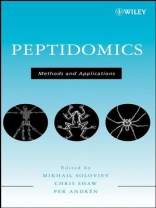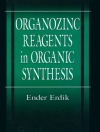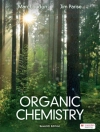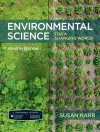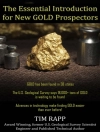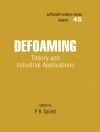The definitive guide to peptidomics- a hands-on lab reference
The first truly comprehensive book about peptidomics for protein
and peptide analysis, this reference provides a detailed
description of the hows and whys of peptidomics and how the
techniques have evolved. With chapters contributed by leading
experts, it covers naturally occurring peptides, peptidomics
methods and new developments, and the peptidomics approach to
biomarker discovery. Explaining both the principles and the
applications, Peptidomics: Methods and Applications:
* Features examples of applications in diverse fields, including
pharmaceutical science, toxicity biomarkers, and neuroscience
* Details the successful peptidomic analyses of biological material
ranging from plants to mammals
* Describes a cross section of analytical techniques, including
traditional methodologies, emerging trends, and new techniques for
high throughput approaches
An enlightening reference for experienced professionals, this book
is sufficiently detailed to serve as a step-by-step guide for
beginning researchers and an excellent resource for students taking
biotechnology and proteomics courses. It is an invaluable reference
for protein chemists and biochemists, professionals and researchers
in drug and biopharmaceutical development, analytical and
bioanalytical chemists, toxicologists, and others.
قائمة المحتويات
SECTION 1: STUDIES OF NATURALLY OCCURRING PEPTIDES.
Chapter 1: Analysis of the peptidomes of amphibian skin granular
gland secretions – an integrated functional genomic strategy (Chris
Shaw, and Tianbao Chen).
Chapter 2: A short history of insect (neuro)peptidomics – A
personal story of the birth and youth of an excellent model for
studying peptidome biology (Peter D.E.M. Verhaert, Martijn W.H.
Pinkse, Maria C. Prieto-Conaway, and Markus Kellmann).
Chapter 3: Peptidomics of short linear cytolytic peptides from
spider venom (Sergey A. Kozlov, Alexander A. Vassilevski, and
Eugene V. Grishin).
Chapter 4: Molecular cloning approaches to peptidomics: the
identification of novel c DNAs encoding neurotoxin-like peptide
pools (Zhensheng Pan, Richard Barry, and Mikhail Soloviev).
Chapter 5: Wheat antimicrobial peptides (Tatyana I. Odintsova,
and Tsezi A. Egorov).
Chapter 6: Immunopeptidomics: Applications to dissect immune
responses through proteomic-based approaches (Ernesto Oviedo-Orta,
and Alexandra Bermudez-Fajardo).
Chapter 7: Strategies for reliable and improved identification
of peptides (Karl Skuld, Maria Folth, Marcus Svensson, Anna
Nilsson, Per Svenningsson, and Per E. Andrun).
SECTION 2: PEPTIDOMICS METHODS AND NEW DEVELOPMENTS.
Chapter 8: Peptidomics approach to proteomics (Petra Zarbig, and
Harald Mischak).
Chapter 9: The importance of sample handling in neuropeptidomics
(Karl Skuld, Marcus Svensson, Anna Nilsson, Maria Folth, Per
Svenningsson, and Per E. Andrun).
Chapter 10: Affinity peptidomics and protein microarrays:
application to forensics and biometrics (Julian Bailes, and Mikhail
Soloviev).
Chapter 11: Selective depletion and enrichment methods for the
analysis of protein and peptide pools (Paul Finch, and Mikhail
Soloviev).
Chapter 12: Detection of target peptides in foods and feeds by
mass spectrometry (Mireia Fernandez Ocaca).
Chapter 13: Quantification of Polypeptides by Mass Spectrometry
(Pedro R. Cutillas).
SECTION 3: PEPTIDOMICS APPROACH TO BIOMARKER
DISCOVERY.
Chapter 14: Biomarker discovery (Petra Zarbig, and Harald
Mischak).
Chapter 15: Can peptidomics provide a useful approach for the
identification of biomarkers of toxicological exposure or effect
(Helen Griffiths)?
Chapter 16: Peptidomics in Neuroendocrine research: a
Caenorhabditis elegans and Mus musculus study (Kurt Boonen, Steven
J. Husson, Geert Baggerman, Anja Cerstiaens, Walter Luyten, and
Liliane Schoofs).
CONCLUSION.
Chapter 17: Peptidomics and Biology: two scientific disciplines
driving each other (Chris Shaw, and Peter D.E.M. Verhaert).
عن المؤلف
Mikhail Soloviev is a Senior Lecturer in Biological Chemistry at the Royal Holloway University of London and serves as the Editor-in-Chiefof the Journal of Nanobiotechnology. CHRIS SHAW is a Professor in Drug Discovery in the School of Pharmacy at Queen’s University in Belfast.PER ANDRéN is an Adjunct Professor in the Department of Pharmaceutical Biosciences at Uppsala University in Sweden.
